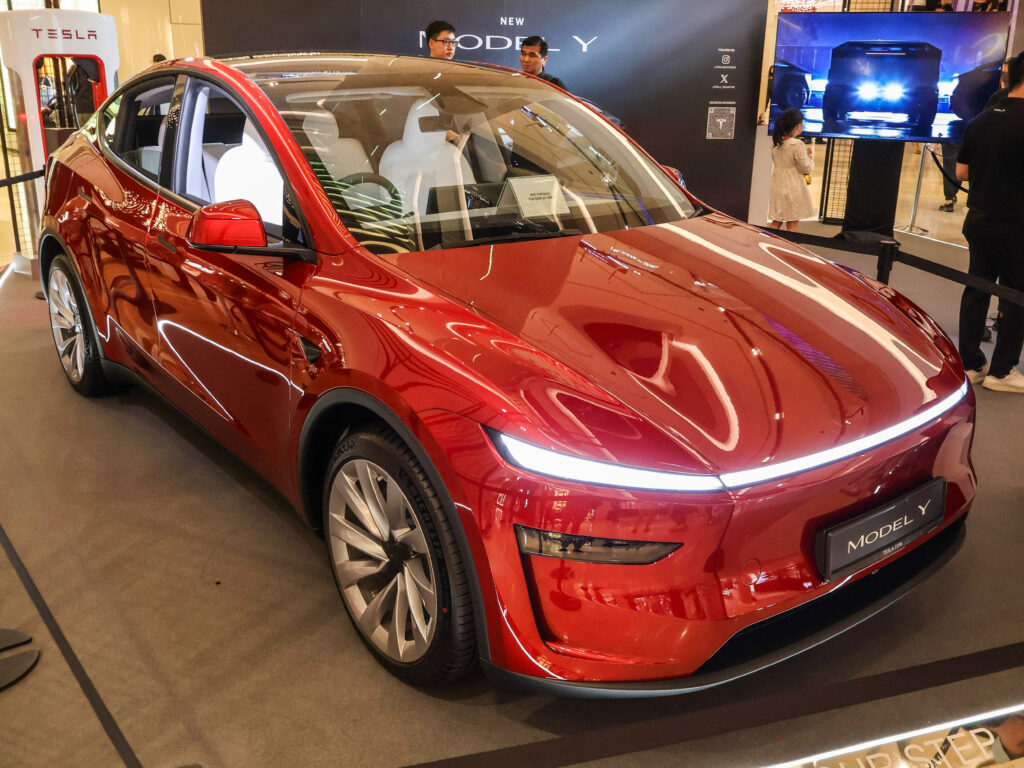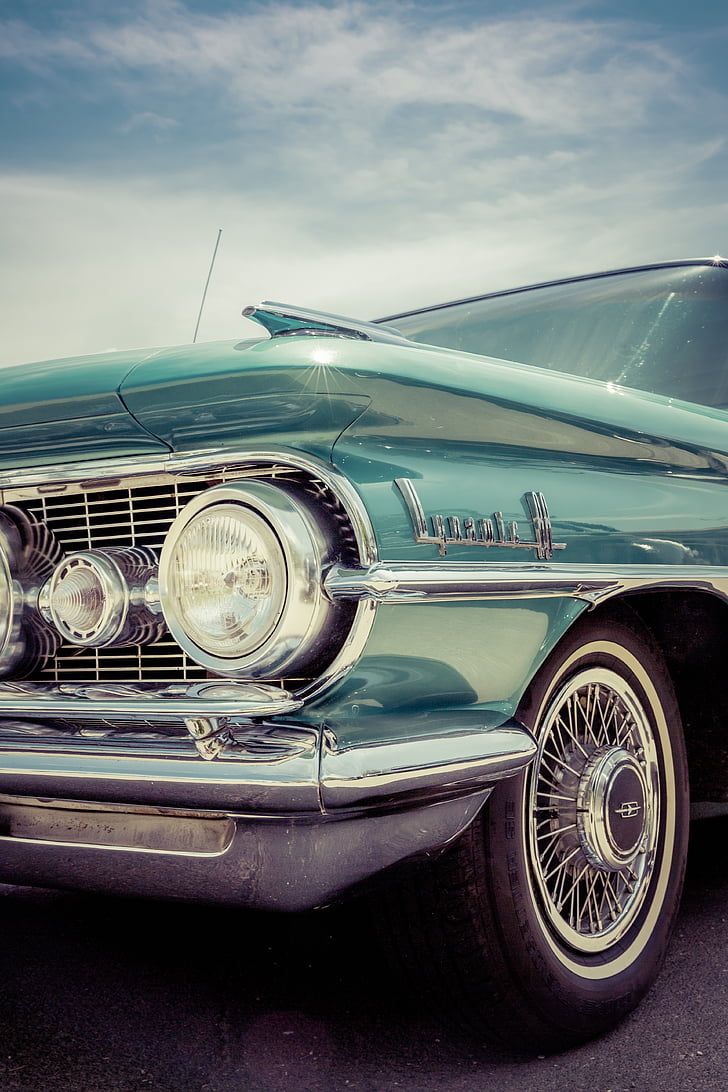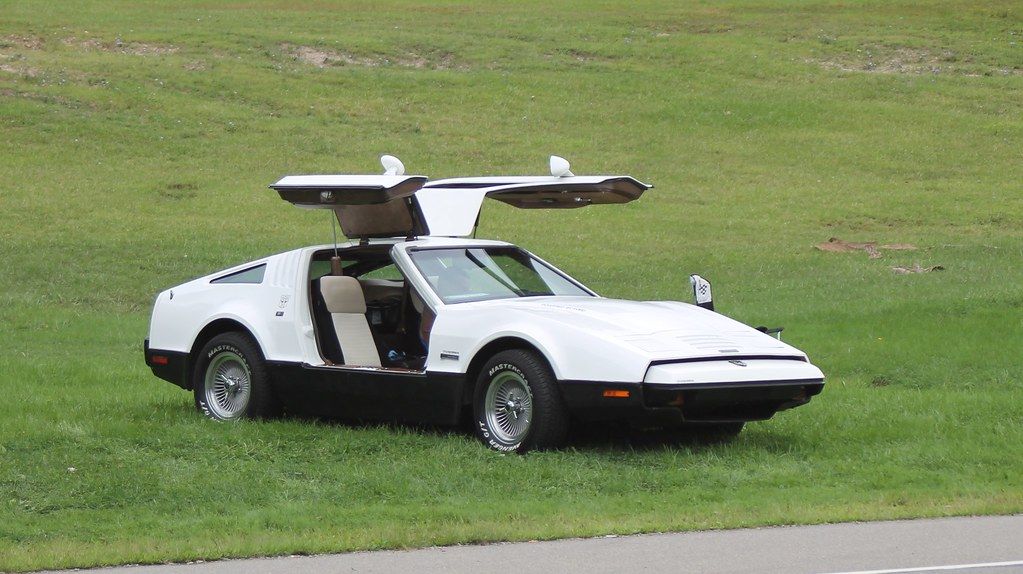
Ah, the allure of a classic car! There’s a certain magic in those chrome bumpers, sweeping fenders, and the unmistakable growl of an old-school V8. For many of us, it’s not just about owning a machine; it’s about reliving youthful memories, finally getting that dream car from high school, or simply embracing a slice of automotive history.
But let’s be brutally honest for a moment: the romanticized image of classic car ownership often collides head-on with a harsh reality. While buying a vintage ride is easier than ever, thanks to online history checks and comparison sites, the market is still rife with beautiful disasters. These are the cars that look stunning at a show or tantalizingly cheap in a classified ad, only to turn into money pits that devour your hard-earned cash in repairs, maintenance, and unexpected issues.
So, before you get swept away by nostalgia or a seemingly irresistible deal, it’s crucial to be informed. We’re here to cut through the rose-tinted glasses and expose the truth about some of these vintage beauties. These aren’t just vehicles; they’re cautionary tales, models that consistently prove to be more trouble than they’re worth due to their performance woes, reliability nightmares, and often, their abysmal resale value. Get ready to rethink your garage dreams, because here are seven classic cars that are better admired from a very safe distance.
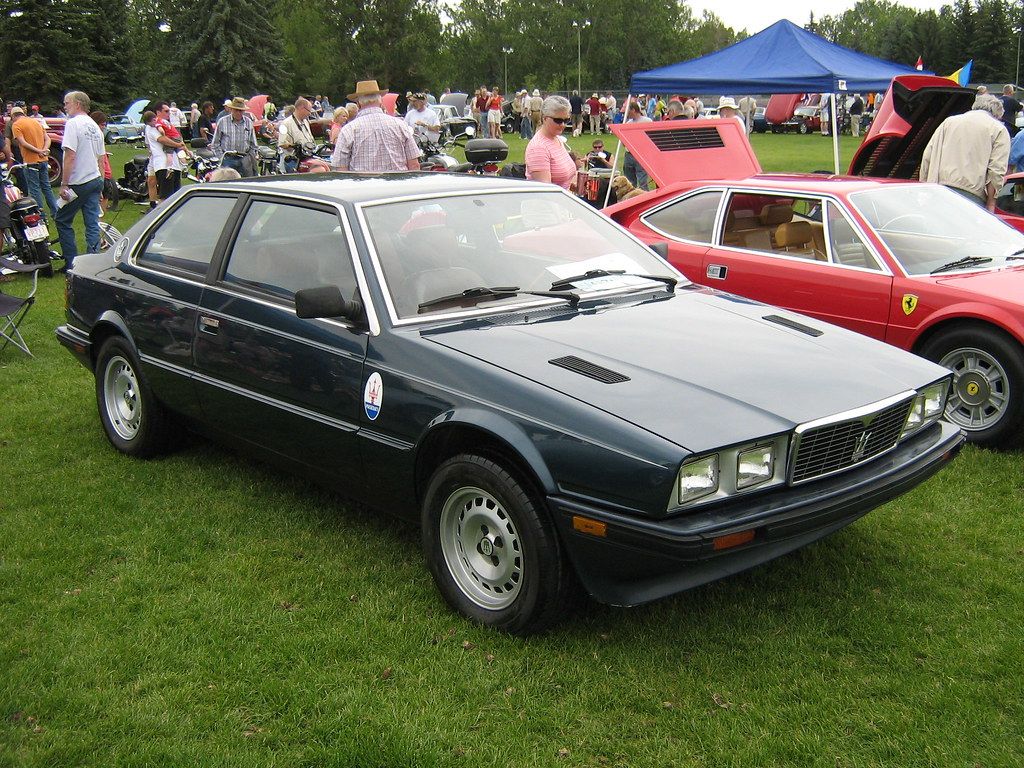
1. **Maserati Biturbo (1982-1988)**The name Maserati alone conjures images of Italian elegance, performance, and exclusivity. So, when the Biturbo arrived in the 1980s, promising exotic European flair at a relatively accessible price, it seemed like a dream come true for budget-conscious collectors. A turbocharged engine, a luxurious interior, and that iconic trident badge—what could possibly go wrong? As it turns out, just about everything.
Professional mechanic Stamatis Zotos explicitly names the Maserati Biturbo as a classic vehicle to avoid. Its poor reputation stems directly from severe build quality and reliability issues that plagued the car throughout its production run. This wasn’t just a few minor hiccups; we’re talking about fundamental flaws that make ownership a constant exercise in frustration and expense.
The problems were widespread and deeply rooted. Owners frequently reported a history of turbo failures, which, as any gearhead knows, is a recipe for an empty wallet. Beyond the turbos, the Biturbo suffered from persistent electrical issues, turning what should have been a thrilling driving experience into a lottery of warning lights and non-functioning components. This fragility made it “expensive to maintain and repair,” a sentiment echoed by experts who describe it as “fast but fragile, requiring constant maintenance and prone to expensive failures.”
Today, the situation is even grimmer. Finding a mechanic capable of understanding and correctly repairing these notoriously complex and temperamental machines is akin to searching for a needle in a haystack. Even if you do, the cost of parts can be “shockingly expensive.” It’s one of those cars that might be “fun to talk about,” but as Silvia Fernandez aptly states, “just not to own.” The Biturbo is a prime example of why an enticing badge and initial appeal aren’t enough to make a classic car a wise investment; it’s a beautiful, expensive trap that even seasoned collectors now wisely avoid.
Car Model Information: 1985 Maserati Biturbo Base
Name: Maserati Biturbo
Caption: Maserati Biturbo E
Manufacturer: Maserati
Production: 1981–1994
Assembly: Modena,Rho, Lombardy
Related: Maserati Shamal,Maserati Ghibli#Ghibli (AM336),Maserati Barchetta,Maserati Quattroporte#Quattroporte IV,Maserati Karif
Designer: Pierangelo Andreani (1977),Marcello Gandini,Zagato
Class: Grand tourer
BodyStyle: 2+2 (car body style),coupé,sedan (car),Cabriolet (automobile)
Layout: Front-engine, rear-wheel-drive layout
Engine: twin-turbocharged,2.5 L twin-turbocharged 90° V6,2.8 L twin-turbocharged 90° V6
Transmission: ZF Friedrichshafen,Automatic transmission,ZF Friedrichshafen
Wheelbase: {{convert,2,514,mm,in,1,abbr=on
Length: {{convert,4,150,mm,in,1,abbr=on
Abbr: on (228)
Width: {{convert,1,710,mm,in,1,abbr=on
Height: {{convert,1,310,mm,in,1,abbr=on
Successor: Maserati Ghibli#Ghibli (AM336),Maserati Quattroporte#Quattroporte IV
Sp: uk
Categories: 1990s cars, All articles needing additional references, All articles with unsourced statements, Articles needing additional references from November 2019, Articles needing additional references from October 2010
Summary: The Maserati Biturbo is a family of executive grand tourers produced by Italian automobile manufacturer Maserati between 1981 and 1994. The original Biturbo was a two-door, four-seater notchback coupé (of somewhat smaller dimensions than the BMW 3 Series of the time) featuring, as the name implies, a two-litre V6 engine with two turbochargers and a luxurious interior.
The car was designed by Pierangelo Andreani, Chief of Centro Stile Maserati up to 1981, somewhat influenced by the design of the then recent Quattroporte III (penned by Italdesign Giugiaro).
All Maserati models introduced from the Biturbo’s inception in 1981, until 1997, were based on variants of the original Biturbo architecture, including the later grand tourers like the Shamal and Ghibli II, as well as the 1994 fourth generation Quattroporte, which used an evolved and slightly stretched (to 2.65 m / 104.3 in wheelbase) Biturbo Saloon platform.
The Barchetta, while of a different layout entirely, used an ultimate version of the Biturbo V6 engine.
Get more information about: Maserati Biturbo
Buying a high-performing used car >>>
Brand: Maserati Model: Biturbo
Price: $13,899 Mileage: 18,319 mi.

2. **Triumph Stag (1970-1977)**When the Triumph Stag debuted in 1970, it was an instant showstopper. Its distinct Michelotti design, featuring that elegant roll-hoop and a clever T-bar roof, made it a sensation at international car shows. Initially, demand among auto enthusiasts and collectors was so high that it led to inflated prices, cementing its status as a desirable new classic. “Although it has a distinct look and is initially appealing,” Stamatis Zotos observed, the dream quickly turned into a mechanical nightmare.
Unfortunately, the Stag’s performance over time has been anything but stellar. It has earned a notorious reputation for mechanical unreliability, with its engine being the primary culprit. The original 3.0-liter V8, designed to give the British convertible some genuine grunt, was plagued by “chronic overheating issues.” These weren’t just minor temperature spikes; they frequently escalated, “often leading to head gasket failures and other costly repairs.”
The heart of the problem lay in the engine’s propensity to boil its own guts. British Leyland’s spotty build practices only exacerbated these issues, contributing to a car that seemed determined to spend more time in the shop than on the open road. The constant upkeep required to keep a Stag running means that cooling system redesigns and even entire engine swaps are alarmingly common modifications for owners desperately trying to stabilize their beloved (but fragile) classic.
For anyone considering a Stag today, the sentiment remains clear: “Unless you’re mechanically inclined and extremely patient, this car’s headaches far outweigh its charm.” Even many classic British car fans, usually fiercely loyal to their marques, tend to “steer clear of this one.” It’s a sad truth that this stylish roadster, which “had one job—offer British style with V8 power—and it blew it,” remains a monument to what happens when ambition outstrips engineering reliability.
Car Model Information: 1972 Triumph Stag
Sp: uk
Caption: 1974 Triumph Stag (with after-market wheels)
Name: Triumph Stag
Production: 1970–1977,25,939 made
Manufacturer: Triumph Motor Company
Class: Sports tourer
Layout: Front-engine, rear-wheel-drive layout
Length: 173 in
Abbr: on
Width: 63.5 in
Weight: 2800 lb
Height: 49.5 in
Wheelbase: 100 in
Related: Triumph TR250,Triumph 2000
Engine: Triumph V8
Designer: Giovanni Michelotti
Categories: 1970s cars, All Wikipedia articles written in British English, All articles with unsourced statements, Articles with short description, Articles with unsourced statements from July 2018
Summary: The Triumph Stag is a 2+2 sports tourer which was sold between 1970 and 1978 by the British Triumph Motor Company, styled by Italian designer Giovanni Michelotti.
Get more information about: Triumph Stag
Buying a high-performing used car >>>
Brand: Triumph Model: Stag
Price: $8,500 Mileage: 63,159 mi.
Read more about: Timeless Legends: 15 Classic Cars from the 60s and 70s That Deserve a Modern MotorTrend Revival.
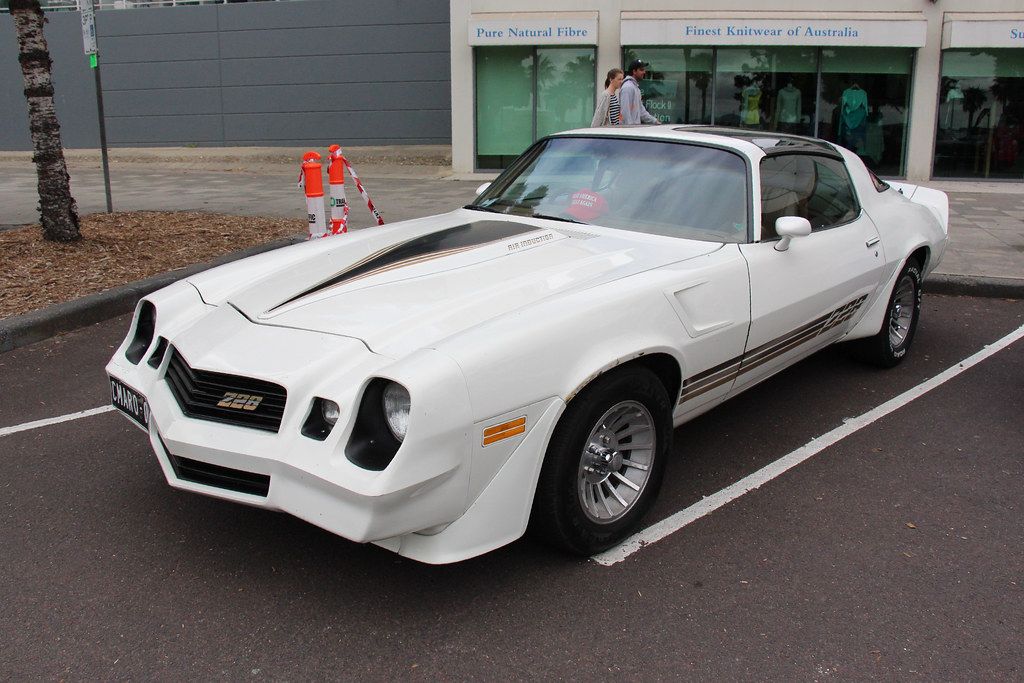
3. **Chevrolet Camaro (1976-1981)**The Chevrolet Camaro is an undeniable icon of American muscle, a car that embodies raw power, classic lines, and a certain rebellious spirit. But not all Camaros are created equal. While many models from its long and storied history are highly coveted, specific years, particularly those manufactured between 1976 and 1981, are best approached with extreme caution. These models are the forgotten chapters of the Camaro’s legacy, largely due to a convergence of factors that severely compromised their quality and desirability.
Andy Saari, a master automotive technician, is unambiguous in his advice: avoid these particular classic Camaros. He points directly to widespread issues such as “poor build quality” that plagued vehicles from these years. This wasn’t just a cosmetic flaw; it affected the structural integrity and overall longevity of the cars. Compounding this, the engines of the era were notoriously “lackluster,” struggling to deliver the kind of performance expected from a car bearing the Camaro badge.
Further crippling these models was the “implementation of tighter emission regulations.” While necessary for environmental reasons, these regulations often led to detuned engines and complex, inefficient emissions systems that further sapped power and complicated maintenance. The result was a generation of Camaros that felt neutered, a far cry from the roaring beasts of earlier and later generations. This trifecta of poor build quality, weak engines, and emissions struggles had a profound impact on the car’s overall value.
Compared to earlier or later models, the 1976-1981 Camaros simply don’t hold their appeal or investment potential. “Expensive repairs and maintenance also cut into any investment or resale value the vehicle might have had,” making them a financial sinkhole. These are the Camaros that largely missed the mark, proving that even an iconic nameplate can stumble when build quality and performance take a backseat. For true muscle car enthusiasts, these years represent a significant dip in an otherwise celebrated lineage, embodying the phrase “all bark and no bite” rather too literally.
Car Model Information: 2018 Chevrolet Camaro 1LS
Name: Chevrolet Camaro
Manufacturer: Chevrolet
Production: 1966–2002,2009–2023
ModelYears: 1967–2002,2010–2024
Class: Pony car
BodyStyle: coupe,convertible
Platform: GM F platform,GM Zeta platform,GM Alpha platform
Layout: Front-engine, rear-wheel-drive layout
Categories: 1970s cars, 1980s cars, 1990s cars, 2+2 coupés, 2000s cars
Summary: The Chevrolet Camaro is a mid-size American automobile manufactured by Chevrolet, classified as a pony car. It first went on sale on September 29, 1966, for the 1967 model year and was designed to compete with the Ford Mustang. The Camaro shared its platform and major components with the Firebird, produced by General Motors’ Pontiac division that was also introduced for the 1967 model year.
Four distinct generations of the Camaro were developed before production ended in 2002. The nameplate was revived on a concept car that evolved into the fifth-generation Camaro; production started on March 16, 2009.
Production of the sixth generation of the Camaro ended in December 2023, for the 2024 model year.
Get more information about: Chevrolet Camaro
Buying a high-performing used car >>>
Brand: Chevrolet Model: Camaro
Price: $18,785 Mileage: 69,196 mi.
Read more about: The Cars That Became Stars: 12 Iconic Vehicles from 70s & 80s TV & Film
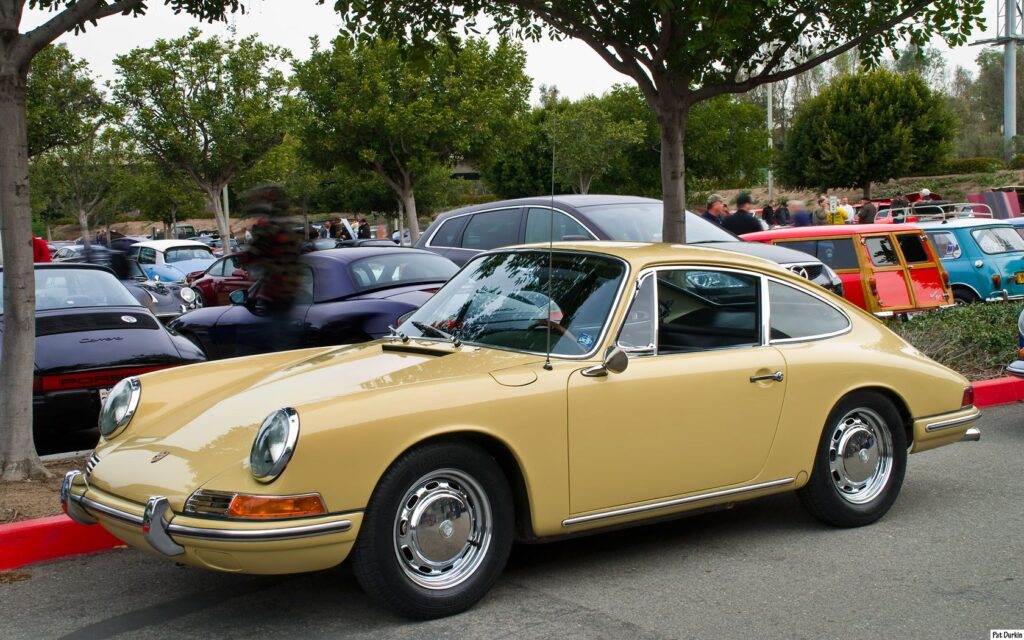
4. **Early Porsche 911s (Pre-1969)**The Porsche 911 is, without question, one of the most revered sports cars in history. Its timeless design, motorsport pedigree, and engaging driving dynamics have made it a benchmark for automotive excellence. Modern 911s are in constant high demand, but the story isn’t quite as straightforward when you delve into its earliest iterations, specifically those built around 1969 or earlier. While they possess an undeniable classic charm, these foundational models come with an array of shortcomings that make them a challenging, and potentially dangerous, proposition for all but the most dedicated and skilled enthusiasts.
Master automotive technician Andy Saari advises caution with these early models, highlighting a critical design characteristic: “The 911’s short wheelbase and rear-engine layout led to a tendency for sudden oversteer, making them tricky to handle at high speeds.” This characteristic, often referred to as ‘snap oversteer,’ means that if the driver isn’t acutely aware and highly skilled, the car can rapidly lose control, especially when pushing its limits. It’s a raw, unfiltered driving experience, but one that demands respect and precision, far from the forgiving nature of modern sports cars.
Beyond their tricky handling dynamics, these earlier 911s also tend to suffer from common ailments associated with vintage vehicles: rust and related damage. Decades of exposure to the elements, combined with the inherent challenges of preserving older metals, mean that finding a rust-free example is a rare and expensive endeavor. This corrosion inevitably makes them “expensive to restore,” often requiring extensive bodywork and specialized expertise to bring them back to their former glory.
So, while the siren song of an early 911 is strong, it’s a call that comes with a significant caveat. These cars are more than just a project; they are a commitment, demanding a deep understanding of their unique characteristics and the financial fortitude to address their inevitable issues. For many, this “tricky mistress” of a classic Porsche 911 can prove to be a “bites back” scenario, leaving owners with a beautiful but demanding piece of history that constantly tests their patience and their bank account.
Car Model Information: 2017 Porsche 911 Carrera
Name: Porsche 911
Caption: The 1 millionth 911 produced on display at Volkswagen Group Forum, Berlin
Designer: Ferdinand Alexander Porsche
Manufacturer: Porsche
Production: September 1964 – present
Assembly: Stuttgart,Baden-Württemberg
Class: Sports car
BodyStyle: unbulleted list
Related: unbulleted list
Layout: Rear-engine design,rear-wheel drive
Predecessor: Porsche 356
Categories: 1970s cars, 1980s cars, 1990s cars, 2+2 coupés, 2000s cars
Summary: The Porsche 911 model series (pronounced Nine Eleven or in German: Neunelf) is a family of German two-door, high performance rear-engine sports cars, introduced in September 1964 by Porsche AG of Stuttgart, Germany, and now in its eighth generation. All 911s have a rear-mounted flat-six engine, and usually 2+2 seating, except for special 2-seater variants. Originally, 911s had air-cooled engines, and torsion bar suspension, but the 911 has been continuously enhanced, and evolved across generations. Though the 911 core concept has remained largely unchanged, water-cooled engines were introduced with the 996 series in 1998, and front and rear suspension have been replaced by Porsche-specific MacPherson suspension up front, and independent multi-link rear suspension.
The 911 has been raced extensively by private and factory teams, in a variety of classes. It is among the most successful competition cars. In the mid-1970s, the naturally aspirated 911 Carrera RSR won world championship races including Targa Florio and the 24 Hours of Daytona. The 911-derived 935 turbo also won the 24 Hours of Le Mans in 1979. Porsche won the World Championship for Makes in 1976, 1977, 1978, and 1979 with 911-derived models.
In a 1999 poll to determine the Car of the Century, the 911 ranked fifth — one of two in the top five that had remained continuously in production (the original Beetle remained in production until 2003). The one millionth example was manufactured in May 2017 and is in the company’s permanent collection.
Get more information about: Porsche 911
Buying a high-performing used car >>>
Brand: Porsche Model: 911
Price: $84,995 Mileage: 43,194 mi.
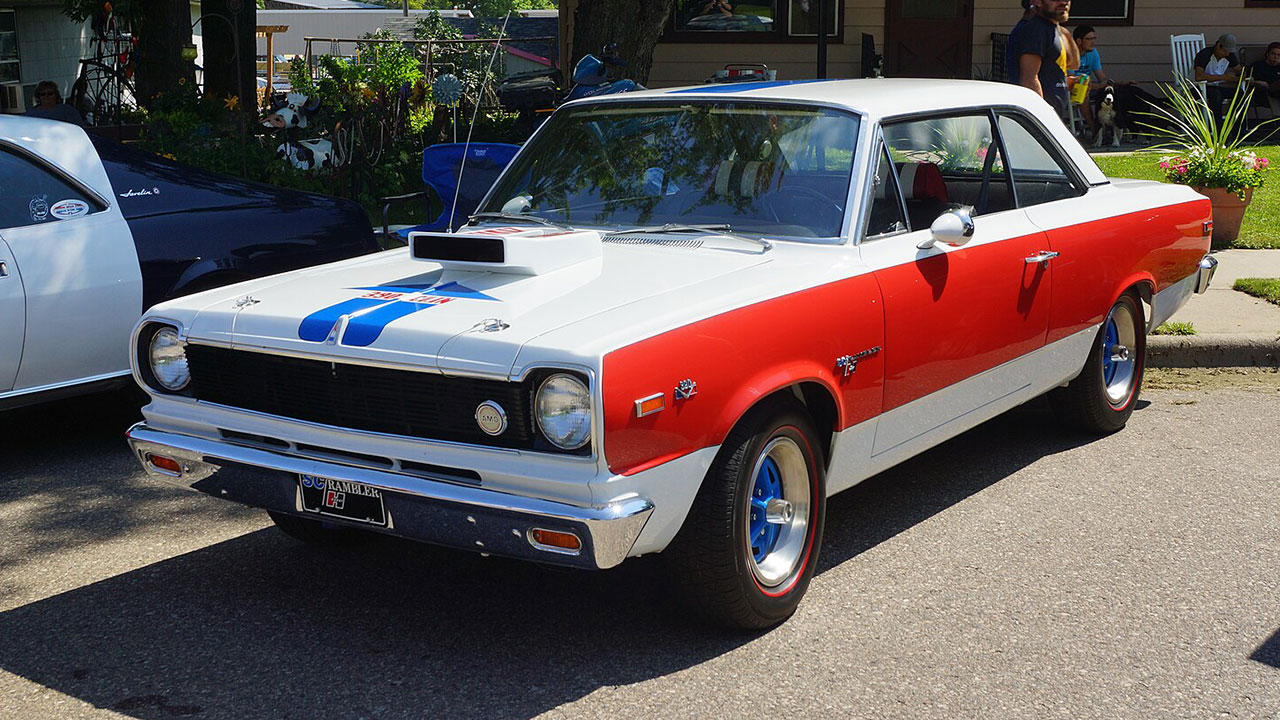
5. **AMC Pacer (1975-1980)**The AMC Pacer burst onto the American car scene in 1975 with a design that was, to put it mildly, unconventional. Affectionately (or perhaps derisively) nicknamed the “fishbowl on wheels,” its distinctive wide stance, massive glass area, and relatively short length made it an unmistakable sight. It was undoubtedly a “cool car back in its day,” pushing boundaries with its futuristic aesthetic and compact intentions. However, looking back from a modern perspective, the Pacer’s initial charm has largely evaporated, leaving behind a classic that’s likely “not worth the investment now.”
The Pacer’s quirky design was unfortunately coupled with numerous practical drawbacks. Peter Niebling, a dealer principal, candidly notes, “The Pacer is more comprehensive than a tank,” alluding to its considerable weight. This bulk, combined with what was often limited power and performance, made for a sluggish driving experience. Its many structural flaws, along with significant issues with steering, further compromised its road manners, transforming it into a less-than-enjoyable ride.
Perhaps one of the most damning issues for any classic car is its susceptibility to rust, and the Pacer was “highly prone to rust.” This vulnerability to corrosion adds significantly to the cost and complexity of restoration, making it a frustrating prospect for collectors. Beyond the rust, finding parts for this oddball vehicle can be a considerable challenge, further compounding the maintenance headaches.
Niebling sums it up perfectly for today’s perspective: “Let’s be honest — they’d make terrible rides to own now.” The Pacer has indeed become “more of a curiosity than a classic,” as one source puts it. Its “oddball styling turns heads, but usually not for the right reasons.” While its quirky nature might appeal to some, the Pacer’s heavy frame, sluggish performance, and persistent parts scarcity transform it from a unique conversation piece into a constant source of frustration, forever solidifying its place as a “punchline rather than a prized collectible.”
Read more about: Timeless Legends: 15 Classic Cars from the 60s and 70s That Deserve a Modern MotorTrend Revival.
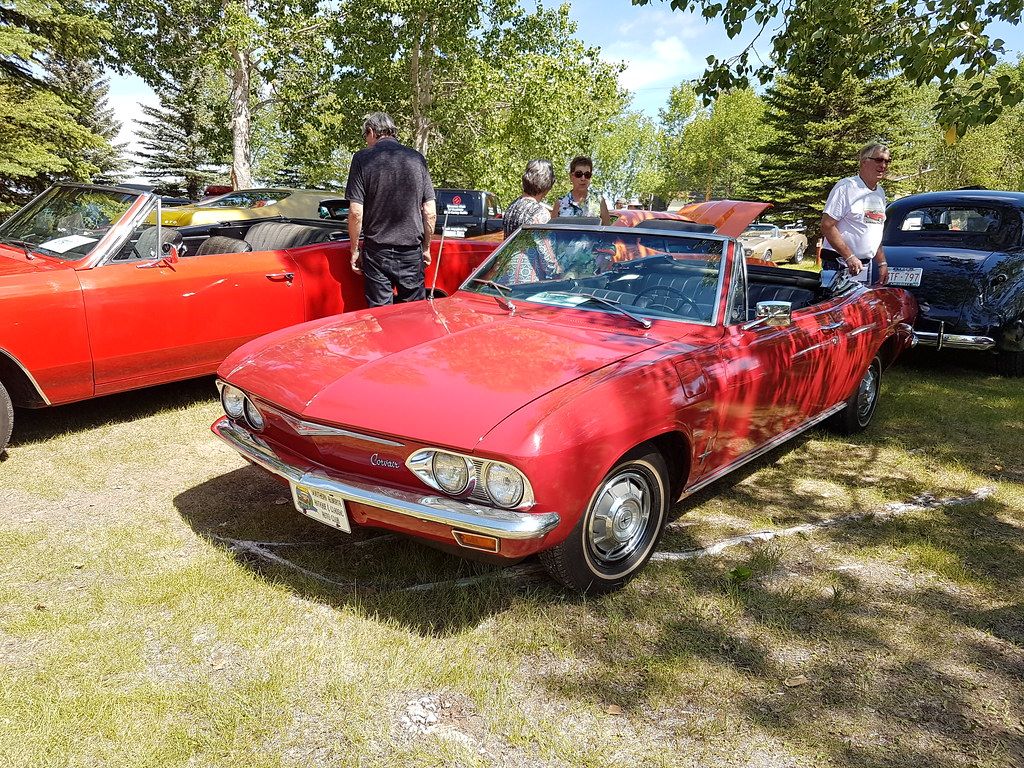
6. **Chevrolet Corvair (1960-1969)**The Chevrolet Corvair, produced from 1960 to 1969, stands as one of the most intriguing and controversial American cars ever built. With its innovative, rear-engine design, it dared to challenge the conventional wisdom of Detroit, offering something genuinely different from its contemporaries. At first glance, the Corvair “seems neat with its rear-engine design,” presenting a vision of European-inspired engineering in an American package. However, this novelty came with significant drawbacks, particularly in an era less accustomed to its unique dynamics.
One of the most persistent criticisms revolved around its handling, especially in earlier models. Peter Niebling bluntly states, “But handling those things couldn’t have been more sketchy.” This “sketchy” reputation, famously highlighted by consumer advocate Ralph Nader, painted the Corvair as an inherently unsafe vehicle. While later models saw improvements, the initial public perception and the inherent challenges of its rear-engine, swing-axle suspension design left an indelible mark on its legacy. It was an ambitious technical experiment that, for many, simply didn’t inspire confidence on the road.
Beyond the handling concerns, owning a Corvair today can be a surprisingly expensive endeavor. According to Niebling, “Getting the right parts for repair purposes can be tricky and expensive.” This scarcity of specialized components means that even routine maintenance can quickly escalate into a costly treasure hunt. The unique rear-engine layout and specific parts often require specialist knowledge and resources that are increasingly hard to come by, making it a financial burden for many would-be owners.
So, while the Corvair holds a special place in automotive history as a bold, if flawed, attempt at innovation, it’s a classic that often demands more than it gives. What might have been a “cool new ride to have in the past” has evolved into a vehicle that, for many, is “isn’t worth the cost now.” It’s a prime example of an automotive experiment that, despite its charm, has become a “greased pig on ice” in terms of handling and a significant drain on resources for those brave enough to keep one running.
Car Model Information: 1964 Chevrolet Corvair Monza
Caption: 1964 Chevrolet Corvair Monza
Name: Chevrolet Corvair
Manufacturer: Chevrolet
Production: 1960–1969
Platform: GM Z platform
Chassis: Unibody
ModelYears: 1960–1969
Assembly: United States,Kansas City, Missouri,Oakland, California,Van Nuys,St. Louis,Flint, Michigan,Belgium,Canada,Mexico,South Africa,Switzerland,Venezuela
Class: Compact car
Successor: Chevrolet Vega
Layout: Rear-engine, rear-wheel-drive layout
Categories: All Wikipedia articles written in American English, All articles lacking in-text citations, All articles needing additional references, All articles with dead external links, All articles with specifically marked weasel-worded phrases
Summary: The Chevrolet Corvair is a rear-engined, air-cooled compact car manufactured and marketed by Chevrolet over two generations between 1960 and 1969. The Corvair was a response to the increasing popularity of small, fuel-efficient automobiles, particularly the imported Volkswagen Beetle and American-built compacts like the Rambler American and Studebaker Lark.
The first generation (1960–1964) was offered as a four-door sedan, two-door coupe, convertible, and four-door station wagon. A two- and four-door hardtop and a convertible were available second-generation (1965–1969) variants. The Corvair platform was also offered as a subseries known as the Corvair 95 (1961–1965), which consisted of a passenger van, commercial van, and pickup truck variant. Total production was approximately 1.8 million vehicles from 1960 until 1969.
The name “Corvair” was first applied in 1954 to a Corvette-based concept with a hardtop fastback-styled roof, part of the Motorama traveling exhibition. When applied to the production models, the “air” part referenced the engine’s cooling system.
A prominent aspect of the Corvair’s legacy derives from controversy surrounding the handling of early models equipped with rear swing axles, articulated aggressively by Ralph Nader’s Unsafe at Any Speed but tempered by a 1972 Texas A&M University safety commission report for the National Highway Traffic Safety Administration (NHTSA) which found that the 1960–1963 Corvair possessed no greater potential for loss of control in extreme situations than contemporary compacts.
To better counter popular inexpensive subcompact competitors, notably the Beetle and Japanese imports such as the Datsun 510, GM replaced the Corvair with the more conventional Chevrolet Vega in 1970.
Get more information about: Chevrolet Corvair
Buying a high-performing used car >>>
Brand: Chevrolet Model: Corvair
Price: $29,988 Mileage: 74,787 mi.
Read more about: 15 Classic Cars You Might Want To Skip: An Expert Guide for Discerning Collectors
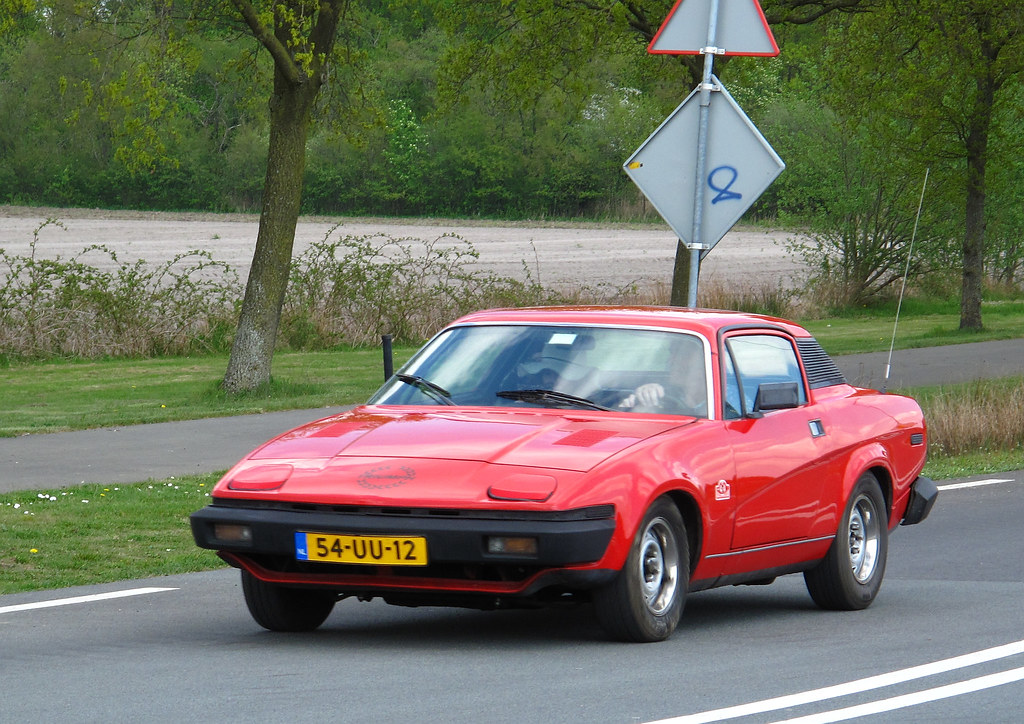
7. **Triumph TR7 (1974-1981)**The Triumph TR7 arrived on the scene with a boldly angular design, famously dubbed “the shape of things to come.” In the mid-1970s, its wedge-like profile certainly stood out, promising a modern, sporty British experience. Peter Niebling himself admits, “The TR7 looked slick when it first dropped.” However, initial appearances, especially with cars from the notoriously troubled British Leyland era, can be deceiving. What promised to be a futuristic sports car quickly devolved into a symbol of disappointment for many owners.
Beneath its sharp styling, the TR7 was plagued by a litany of reliability issues. Niebling’s blunt assessment cuts to the chase: “But it turned out to be unreliable, with many electrical issues and stuff breaking down.” These weren’t isolated incidents; early production models were notorious for their poor build quality and persistent “electrical gremlins.” Imagine a sunny weekend drive turning into an impromptu roadside troubleshooting session, all thanks to a temperamental wiring harness.
Adding to the frustration, securing replacement parts for the TR7 today can be a heroic quest. “Good luck finding replacement parts, too,” Niebling cautions, highlighting a common problem with less successful classic models. While it met the safety standards of its time, the TR7 also suffered from certain safety issues, such as “poor brakes,” which, though not uncommon for older cars, can significantly dent its appeal and potential return on investment.
Ultimately, the TR7 became known for its “underwhelming performance” and “awkward styling,” especially as time went on. It’s a car that “hasn’t earned the nostalgic love other British classics have,” primarily because the headaches of ownership often overshadow any perceived charm. The TR7 stands as a stark reminder that a slick design is no substitute for robust engineering, making it a wedge that promised the future but delivered a breakdown, leaving many enthusiasts to wisely keep their distance.
Car Model Information: 1981 Triumph TR7
Sp: uk
Name: Triumph TR7
Caption: 1975 Triumph TR7
Production: unbulleted list
Manufacturer: Triumph Motor Company
Class: Sports car
Layout: FR layout
Predecessor: Triumph TR6
Transmission: unbulleted list
Related: Triumph TR8
Engine: unbulleted list
Abbr: on (coupé)
BodyStyle: unbulleted list
Wheelbase: 85 in
Length: 160 in
Width: 66.2 in
Weight: 1101 kg
Order: flip (coupé)
Height: 50 in
Assembly: unbulleted list
Designer: Harris Mann
Categories: 1980s cars, All Wikipedia articles written in British English, All articles with unsourced statements, Articles tagged with the inline citation overkill template from January 2024, Articles with short description
Summary: The Triumph TR7 is a sports car that was manufactured in the United Kingdom from September 1974 to October 1981 by British Leyland Motor Corporation (BLMC), which changed its name to British Leyland (BL) in 1975. The car was launched in the United States in January 1975, with its UK home market debut in May 1976. The UK launch was delayed at least twice because of high demand for the vehicle in the US, with final sales of new TR7s continuing into 1982.
It was initially produced at the Speke, Liverpool, factory, moving to Canley, Coventry, in 1978 and then finally to the Rover Solihull plant in 1980.
Get more information about: Triumph TR7
Buying a high-performing used car >>>
Brand: Triumph Model: TR7
Price: $12,000 Mileage: 83,693 mi.
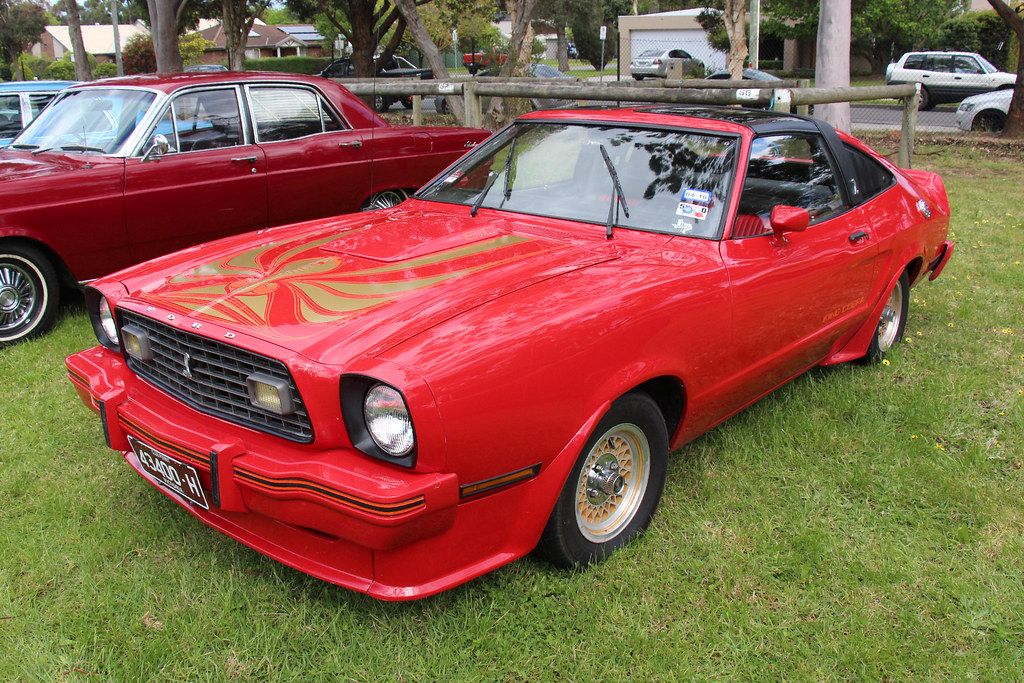
8. **Ford Mustang II (1974-1986)**Ah, the Mustang II. Where do we even begin with this one? Ford’s timing couldn’t have been worse for a car bearing the hallowed Mustang nameplate. It landed right as the gas crisis hit, and the corporate decision-makers leaned hard into economy rather than the raw performance that defined its predecessors. The result was less of a muscle car revival and more of a whispered apology.
Frankly, the Mustang II was built on the humble bones of the Pinto platform. Let that sink in for a moment. It came standard with a 2.3L inline-four engine, pushing a meager 88 horsepower. Even the optional V6 struggled to move the car with any real urgency, leaving drivers underwhelmed. This model distinctly “lacked the performance and appeal of its predecessors, leaving it overshadowed and underappreciated.”
Beyond the sheer lack of ponies, the Mustang II suffered from questionable build quality and notoriously limited parts support today. It ended up with none of the charm that made earlier Mustangs iconic, trading power and style for a forgettable blend of economy and practicality. As one expert rightly points out, its underpowered engines and bland design make it “a definite pass unless you’re collecting for irony.”
Car Model Information: 2024 Hyundai SANTA FE SEL
Name: Second generation
Caption: Ford Mustang II coupe
Aka: Ford Mustang II , Ford T5 (in Germany)
Class: Pony car,Subcompact car
Production: 1973–1978
ModelYears: 1974–1978
Predecessor: Ford Mustang (first generation)
Successor: Ford Mustang (third generation)
Assembly: Unbulleted list
Layout: Front-engine, rear-wheel-drive layout
BodyStyle: coupé,hatchback
Related: Ford Pinto,Ford Pinto
Manufacturer: Ford Motor Company
Engine: ubl
Transmission: ubl
Wheelbase: cvt
Length: cvt
Width: cvt
Height: cvt
Designer: Buck Mook, Dick Nesbitt
Categories: All articles with dead external links, All articles with unsourced statements, Articles with dead external links from April 2024, Articles with permanently dead external links, Articles with short description
Summary: The second-generation Ford Mustang, marketed as the Ford Mustang II, is a two- or three-door, four-passenger, front-engine/rear-drive pony car manufactured and marketed by Ford from 1973 until 1978. Introduced in September 1973 for the 1974 model year, the Mustang II arrived roughly coincident with the oil embargo of 1973 and subsequent fuel shortages. Developed under Lee Iacocca, it was an “entirely new kind of pony car.” Ford “decided to call it Mustang II, since it was a new type of pony car designed for an era of high gas prices and fuel shortages.”
The Mustang II was 490 lb (222 kg) lighter and almost 19 in (483 mm) shorter than the 1973 Mustang, and derived from the subcompact Pinto platform. While sharing a limited number of driveline components with the Pinto, the Mustang II employed an exclusive subframe, isolating its front suspension and engine mount subframe. The steering used a rack-and-pinion design.
Named Motor Trend’s 1974 Car of the Year and reaching over 1.1 million sales over four years of production, the Mustang II is noted simultaneously for both its marketing prescience and strong sales – while criticized as having abandoned essential aspects of the Mustang heritage and described, in a retrospective after 40 years since its introduction, as embodying the Malaise era.
Get more information about: Ford Mustang (second generation)
Buying a high-performing used car >>>
Brand: Ford Model: Mustang II
Price: $28,793 Mileage: 12,504 mi.

9. **Chevrolet Corvette C3 (early 1980s)**The C3 Corvette, with its dramatic lines, always looked the part. It’s a silhouette that instantly screams ‘American muscle car.’ But let’s get real: the early 1980s models of this iconic machine were, to put it mildly, all bark and no bite. They carried the torch of that legendary design but, sadly, lost much of the fire that made Corvettes so exhilarating.
The culprit? Emissions restrictions and an overriding focus on fuel economy that suffocated performance. The 1980 base L48 engine, a 5.7L V8 no less, produced a measly 190 horsepower. Yes, you read that right. Performance was “sluggish, especially by Corvette standards,” a disappointing truth for anyone expecting a roaring beast. This was a Corvette that felt neutered, a shadow of its former, more potent self.
It wasn’t just the engine, either. The weight-to-power ratio was completely out of sync, making for a less-than-thrilling drive. Moreover, the build quality took a noticeable hit during these years. Owners frequently lament interior plastics that aged poorly, finicky electronics, and a ride quality that prioritized style over any real substance. Values of these specific C3s have remained stubbornly flat, and for good reason.
Car Model Information: 2024 Hyundai PALISADE Calligraphy
Name: Chevrolet Corvette (C3)
Caption: 1973 Chevrolet Corvette Stingray
Manufacturer: Chevrolet
Aka: Chevrolet Corvette Stingray,(1968–76)
Production: August 1967 – October 1982
ModelYears: 1968–82
Platform: General Motors Z platform
Assembly: St. Louis Truck Assembly,Bowling Green Assembly Plant
Predecessor: Chevrolet Corvette (C2)
Successor: Chevrolet Corvette (C4)
Class: Sports car
BodyStyle: Convertible (car),coupé
Layout: Mid-engine design
Engine: {{cvt,305,cuin,L,1,Chevrolet small-block engine (first- and second-generation)#LG4,V8 engine
Transmission: manual transmission,manual transmission,Turbo-Hydramatic,Automatic transmission
Wheelbase: cvt
Length: {{cvt,182.1,in,mm,0
Width: {{cvt,69.2,in,mm,0
Height: {{cvt,47.8,in,mm,0
Weight: cvt
Designer: GM & Chevrolet design staff,Zora Arkus-Duntov,Bill Mitchell (designer)
Categories: 1970s cars, 1980s cars, All articles with unsourced statements, Articles with short description, Articles with unsourced statements from April 2024
Summary: The Chevrolet Corvette (C3) is the third generation of the Corvette sports car that was produced from 1967 until 1982 by Chevrolet for the 1968 to 1982 model years. Engines and chassis components were mostly carried over from the previous generation, but the body and interior were new. It set new sales records with 53,807 produced for the 1979 model year. The C3 was the second Corvette to carry the Stingray name, though only for the 1969–76 model years. This time it was a single word as opposed to Sting Ray as used for the 1963–67 C2 generation. The name was then retired until 2014 when it returned with the release of the C7.
The most expensive Corvette C3 to sell in history was a 1969 L88 Lightweight, one of only four lightweight L88s to be produced. It was sold by Barrett-Jackson in January 2014 for $2,860,000 (£1,728,941).
Get more information about: Chevrolet Corvette (C3)
Buying a high-performing used car >>>
Brand: Chevrolet Model: Corvette C3
Price: $41,542 Mileage: 11,502 mi.
Read more about: Timeless Legends: 15 Classic Cars from the 60s and 70s That Deserve a Modern MotorTrend Revival.

10. **Cadillac Eldorado (1976 Convertible)**Ah, the 1976 Cadillac Eldorado Convertible. This car was a statement piece, no doubt, marketed with certain gravitas as the “last American convertible” at the time. This designation, whether entirely accurate or not, certainly generated frenzied, almost artificial, collector hype. People snapped them up, hoping to tuck away a piece of automotive history that would appreciate.
Underneath that massive hood resided a behemoth 500-cubic-inch V8. Sounds impressive, right? Well, prepare for disappointment. Despite its colossal displacement, this engine only churned out a paltry 190 horsepower. That much weight combined with so little actual power made for a notoriously “floaty, unresponsive drive” that felt more like piloting a land yacht than a luxury car. It was, frankly, a gas-guzzling beast that struggled to get out of its own way.
The dream of future value, unfortunately, never really materialized. These cars are big, “awkward to drive,” and without question, “expensive to fix.” Nostalgia, as charming as it can be, simply cannot overcome the constant maintenance headaches and the uncomfortable truth that it drives more like a plush, oversized couch than a proper automobile. You might get a kick out of the sheer audacity of its size, but not much else.
Car Model Information: 1976 Cadillac Eldorado Convertible
Caption: 1963 Cadillac Eldorado Convertible
Name: Cadillac Eldorado
Manufacturer: Cadillac
Production: 1952–2002
Layout: Front-engine, rear-wheel-drive layout
Aka: Cadillac Fleetwood Eldorado
Class: Personal luxury car
Successor: Cadillac CTS
Categories: 1960s cars, 1970s cars, 1980s cars, 1990s cars, 2000s cars
Summary: The Cadillac Eldorado is a luxury car manufactured and marketed by the Cadillac Motor Car Division of General Motors from 1952 until 2002, over twelve generations.
The Eldorado was at or near the top of the Cadillac product line. The original 1953 Eldorado convertible and the Eldorado Brougham models of 1957–1960 had distinct bodyshells and were the most expensive models offered by Cadillac during those years. The Eldorado was never less than second in price after the Cadillac Series 75 limousine until 1966. Beginning in 1967, the Eldorado retained its premium position in the Cadillac price structure, but was manufactured in high volumes on a unique, two-door personal luxury car platform.
The Eldorado carried the Fleetwood designation from 1965 through 1972, and was seen as a modern revival of the pre-war Cadillac V-12 and Cadillac V-16 roadsters and convertibles.
Get more information about: Cadillac Eldorado
Buying a high-performing used car >>>
Brand: Cadillac Model: Eldorado
Price: $29,499 Mileage: 31,898 mi.

11. **DeLorean DMC-12 (1982)**Let’s be honest: the DeLorean DMC-12 is iconic. Thanks to a certain time-traveling movie franchise, its gullwing doors and stainless-steel body are instantly recognizable and perpetually cool in cinematic lore. It looks absolutely fantastic in a photo, and even better on the silver screen. However, as many an owner has discovered, that’s often where the charm abruptly stops. The reality of owning a DeLorean is a far cry from its Hollywood mystique.
Beneath that visually striking exterior lay a 2.8L V6 engine that produced a meager 130 horsepower. Couple that with a car that weighed over 2,700 pounds, and you’re looking at a zero to 60 mph time of nearly 10 seconds. For a car that looked like it belonged in the future, its performance was firmly stuck in the slow lane. “Handling didn’t help its case” either, making it less of a thrilling sports car and more of a sluggish curiosity.
Then there’s the unique stainless-steel body. While distinctive, these panels are a “pain to repair or refinish,” demanding specialized knowledge. Parts availability for the DMC-12 has always been incredibly hit-or-miss. Add to this the notoriously “inconsistent build quality” that plagued its Northern Ireland plant, and you quickly realize this isn’t a simple classic to maintain. “Unless you’re a serious collector or a movie buff with deep pockets, it’s best left in 1985.”
Car Model Information: 1981 Delorean DMC-12
Name: DMC DeLorean
Alt: 1983 DeLorean
Caption: 1983 DeLorean
Manufacturer: DeLorean Motor Company
Production: January 21, 1981 – December 1982
ModelYears: 1981–1983
Assembly: Dunmurry
Designer: Giorgetto Giugiaro
Class: Sports car
BodyStyle: coupé
Layout: Rear-engine, rear-wheel-drive layout
Doors: Gull-wing doors
Engine: 2.85 L
Abbr: on
Powerout: 130 hp
Transmission: 5-speed manual ,3-speed automatic
Wheelbase: 2413 mm
Length: 4267 mm
Width: 1988 mm
Height: 1140 mm
Weight: 1233 kg
Sp: us
Categories: 1980s cars, All Wikipedia articles written in American English, Articles with short description, Automobiles with backbone chassis, Automobiles with gull-wing doors
Summary: The DMC DeLorean is a rear-engine, two-seat sports car manufactured and marketed by John DeLorean’s DeLorean Motor Company (DMC) for the American market from 1981 until 1983—ultimately the only car brought to market by the fledgling company. The DeLorean is sometimes referred to by its internal DMC pre-production designation, DMC-12, although this was not used in sales or marketing materials for the production model.
Designed by Giorgetto Giugiaro, the DeLorean is noted for its gull-wing doors and brushed stainless-steel outer body panels, as well as its lack of power and performance. Though its production was short-lived, the DeLorean became widely known after it was featured as the time machine in the Back to the Future films.
With the first production car completed on January 21, 1981, the design incorporated numerous minor revisions to the hood, wheels and interior before production ended in late December 1982, shortly after DMC filed for bankruptcy and after total production reached an estimated 9,000 units.
Despite the car having a reputation for poor build quality and an unsatisfactory driving experience, the DeLorean continues to have a strong following, driven in part by the popularity of Back to the Future. 6,500 DeLoreans were estimated to still be on the road as of 2015.
Get more information about: DMC DeLorean
Buying a high-performing used car >>>
Brand: DeLorean Model: DMC-12
Price: $56,500 Mileage: 0 mi.
Read more about: 15 Classic Cars You Might Want To Skip: An Expert Guide for Discerning Collectors

12. **AMC Gremlin (1971)**Oh, the AMC Gremlin. If ever there was a car that embodied ‘unconventional,’ this was it. AMC tried to cash in on the burgeoning compact market, but what they delivered was, frankly, a bit of a Frankenstein’s monster. Essentially a chopped-up Hornet, its cartoonish proportions and abrupt, truncated rear end gave it an unmistakable appearance. It was certainly… unique.
The base model rolled off the assembly line with a 3.3L inline-six, which managed to churn out a grand total of 100 horsepower. Not exactly a tire-shredding figure. This power, or lack thereof, wasn’t enough to compensate for its truly oddball looks or its decidedly basic interior. It felt, and still feels, like a car built to a strict budget, which, let’s be fair, it was.
As a classic today, the Gremlin carries its original cheapness into the modern era. “Reliability is spotty,” to say the least, and tracking down those often-unique trim pieces can be an exercise in futility. It never quite aged into something truly collectible or desirable beyond a very niche, ironic appreciation. For many, it remains “more of a punchline than a project worth pursuing.”
Read more about: Buyer Beware: These 10 Popular Cars Are Known Money Pits After 100,000 Miles, According to Automotive Experts

13. **Chrysler Cordoba (1979)**”Rich Corinthian leather.” If you were alive in the late ’70s, you probably heard that phrase uttered by Ricardo Montalbán, marketing the Chrysler Cordoba as the epitome of personal luxury. This car truly leaned on image. But let’s be brutally honest: underneath the marketing sheen, the Cordoba often lacked the substance to back up its lofty claims.
Under the hood, even the larger 360-cubic-inch V8 felt sluggish, struggling under the car’s considerable bulk. Performance was never a strong suit, and frankly, the driving experience left much to be desired. “Build quality wasn’t great,” a common complaint from the era, and the handling could best be described as vague at best. This wasn’t a precision instrument; it was a cruiser, and not a particularly inspiring one.
The Cordoba found itself in an identity crisis. It tried desperately to blend personal luxury with the fading echoes of the muscle-car era, but ended up being too soft for true luxury buyers and far too weak for anyone craving genuine performance. Its appeal today is mostly ironic, a testament to an era of questionable automotive decisions. You can find far “better luxury coupes from the same era that actually live up to their names.”
Car Model Information: 1977 Chrysler Cordoba
Assembly: Windsor Assembly,Windsor, Ontario
Name: Chrysler Cordoba
Caption: 1978 Chrysler Cordoba
Manufacturer: Chrysler Corporation
Class: Personal luxury car
ModelYears: 1970,1975–1983
Predecessor: Chrysler 300 non-letter series
Successor: Chrysler Laser
BodyStyle: coupe
Layout: Front-engine, rear-wheel drive layout
Categories: 1980s cars, Articles with short description, Cars introduced in 1975, Chrysler vehicles, Commons category link from Wikidata
Summary: The Chrysler Cordoba was introduced as a full-sized luxury car based on the Chrysler Newport that was marketed during the 1970 model year. It was also applied to a show car exhibited that year.
The nameplate was then applied to an intermediate-sized two-door personal luxury car starting with the 1975 model year. The Cordoba was manufactured by Chrysler in North America over two generations until the 1983 model year.
The personal luxury version was the company’s first model produced specifically for that market segment and the first Chrysler-branded vehicle smaller than full-size.
The name was taken from the Spanish city of Córdoba, Spain.
Get more information about: Chrysler Cordoba
Buying a high-performing used car >>>
Brand: Chrysler Model: Cordoba
Price: $22,000 Mileage: 30,467 mi.

14. **Cadillac Cimarron (1981)**Oh, Cadillac. What were you thinking? The 1981 Cimarron is often held up as one of the most egregious examples of badge-engineering run amok. GM’s attempt to slap a Cadillac badge and a premium price tag onto a decidedly pedestrian Chevrolet Cavalier went about as badly as you’d expect. It was a move that, frankly, insulted the intelligence of buyers and did irreparable harm to the revered Cadillac brand reputation.
Underneath its thinly disguised exterior, the Cimarron was pure J-body economy car. It came with a 1.8L four-cylinder engine, managing a rather pathetic 88 horsepower. There was little, if anything, to justify its inflated price point. You were essentially paying Cadillac money for Cavalier performance and engineering. It offered “no real Cadillac feel at all,” leaving owners wondering exactly what they had paid for.
The “interior upgrades were minimal,” amounting to little more than slightly fancier trim. The driving experience remained largely unchanged from its cheaper sibling, meaning a bland, uninspired ride. The Cimarron “hurt Cadillac’s reputation and still hasn’t lived it down,” becoming a punchline rather than a prized luxury vehicle. It stands as a powerful lesson in how not to differentiate a premium brand.
Read more about: The Road to Ruin: 12 High-Performance Cars That Drove Straight into Disaster and Became Automotive Nightmares

15. **Bricklin SV-1 (1974)**At first glance, the Bricklin SV-1 from 1974 certainly seemed cool. With its futuristic, wedge-shaped design, distinctive gullwing doors, and composite body, it aimed to be a safety-focused sports car ahead of its time. The ambition was certainly there, promising a bold new direction for performance and protection. But as with many ambitious projects, the reality behind the gimmicks was far more troubled.
Behind the sleek façade, the SV-1 was plagued by a litany of manufacturing issues. Early models were powered by an AMC 360 V8, later transitioning to a Ford 351W—neither of which, frankly, made much power. The car was heavy for what little it delivered, making performance feel lackluster despite its sporty pretensions.
Perhaps its most notorious flaw lay with those impressive gullwing doors. They “failed constantly due to hydraulic problems,” turning a show-stopping feature into a recurring nightmare. Panel fitment was notoriously “hit-or-miss,” giving the car a cobbled-together feel. Production ended abruptly after just two short years, a clear indicator of the challenges faced. Most owners today spend “more time wrenching than driving.”
***
Car Model Information: 1975 Bricklin SV-1
Name: Bricklin SV-1
Manufacturer: Bricklin Canada Ltd.,General Vehicles Inc.
Production: 1974–1976
ModelYears: 1974–1976
Assembly: Saint John, New Brunswick
Designer: Marshall Hobart,Herb Grasse
Class: Sports car
BodyStyle: hatchback
Layout: Front-engine, rear-wheel-drive layout
Engine: ubl ,AMC V8 engine#360
Transmission: ubl
Wheelbase: cvt
Length: cvt
Width: cvt
Height: cvt
Weight: cvt
Sp: us
Doors: Gull-wing doors
Categories: Articles with short description, Automobiles with gull-wing doors, CS1: long volume value, Cars introduced in 1974, Cars of Canada
Summary: The Bricklin SV-1 is a two-seat sports car produced by American businessman Malcolm Bricklin and his manufacturing company from 1974 until early 1976. The car was noteworthy for its gull-wing doors and composite bodywork of color-impregnated acrylic resin bonded to fiberglass. Assembly took place in Saint John, New Brunswick, Canada. The name SV-1 is an abbreviation of “safety vehicle one”. Bricklin company literature uses both the SV-1 and SV1 formats. To promote the car’s safety bona fides, the company touted such features as its integrated roll-over structure and energy-absorbing bumpers.
Get more information about: Bricklin SV-1
Buying a high-performing used car >>>
Brand: Bricklin Model: SV-1
Price: $36,485 Mileage: 34,002 mi.
So, there you have it: a deep dive into some truly memorable, if not always desirable, pieces of automotive history. The allure of a classic car can be intoxicating, a powerful pull of nostalgia and romanticized freedom. But as we’ve seen, not every vintage beauty ages with grace—or value. Some were flawed from the start, while others buckled under the weight of emissions rules, cost-cutting, or simply plain bad timing. They might look tempting parked under the bright lights of a car show or tantalizingly cheap in a classified ad, but trust us, these particular models tend to bring more trouble than they’re ever worth. Whether it’s the underwhelming performance, the relentless reliability nightmares, or the eye-watering cost of parts, these cars are better appreciated from a respectful, very safe distance. Because in the thrilling, often unpredictable world of classic car ownership, an informed decision is always the best upgrade you can make to your garage.

